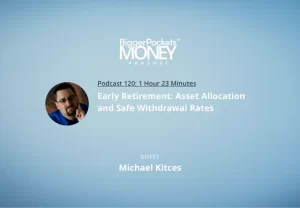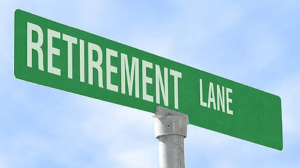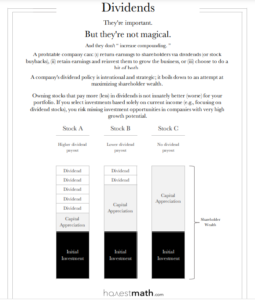By Fritz Gilbert, TheRetirementManifesto.com
Special to Financial Independence Hub
For those who are planning on retiring in the next few years, retirement blind spots can be dangerous.
Wouldn’t it be helpful…
- …If we could get a list of our potential retirement blind spots, based on feedback from actual retirees?
- …If we could utilize the experience of actual retirees to help shine the light on shortfalls in our planning?
- …If someone would tell us what we should really be thinking about as we plan for retirement?
Today, we’re doing exactly that.
We’ve got a special post for you today, a post that has required hours of work by Eric Weigel, my partner on a special survey we conducted with the readers of this blog, among others. It’s the most comprehensive survey ever conducted by this blog, and you will be interested in the groundbreaking results.
After all, you are the subject!
- If you’ve already retired, you told us about your actual experience.
- If you’re planning on retiring, you’ve told us your expectations.
By comparing the responses of the two groups, we’ve compiled a list of potential blind spots that anyone planning for retirement should be aware of.
It’s time to put on your sunglasses.
Below, we’re shining the light on the retirement blind spots we discovered by analyzing your responses. This is one of the longest posts I’ve ever written, but the content is invaluable. If you don’t have time to read the entire post, skim through the charts and read the conclusion for the 5 most important retirement blind spots you helped to reveal.
Today, we’re shining the light on the most important blind spots you should be aware of as you plan for retirement. Click To Tweet
Shining the Light on Retirement Blind Spots
On March 1, 2023 you received an e-mail from me with a link to a survey, which was titled “Retirement Attitudes & Perspectives.” In total, 1,734 people took the survey. Most were from this blog, but we also reached out on various channels focused on retirement planning, including Eric Weigel’s page (Retire With Possibilities), The Modern Elder Academy, The Retirement Coaches Association, and personal social media pages.
Eric Weigel, author of Reimaging Retirement, developed the survey and compiled the results (a special note of thanks for the hours he’s invested in this project). He has completed an impressive Final Report with all of the survey detail, which I encourage you to read. The title page is presented below, which is linked to the full report.

The primary goal of the research was to compare retirement attitudes & perspectives between those on the cusp of retirement to those who have already retired. How do attitudes change pre- vs. post-retirement, and what can we learn to shed light on potential retirement blind spots for those who are approaching retirement?
To start, the following chart summarizes the demographics of respondents:

We were pleased that over 90% of the respondents fell in the “retirement sweet spot” (Ages 51+). We also had a perfect blend of pre- vs. post-retirees, with 54% classifying themselves as retired, 45% planning to retire (half of whom expect to retire within 2 years), and 1% who had no plans of retiring. 70% of the responders were male, and 86% of the respondents were married.
Below are the summarized results of the survey, which will be presented as follows:
Table Of Contents
- Combined Results (Both Pre- And Post-Retirees)
- “Retired Only” Responses
- Discovering Blind Spots – Part I
- Discovering Blind Spots – Part II
- Which Components Lead To A Good Life In Retirement?
- Conclusion – The Top 5 Retirement Blind Spots
I. Combined Results (Both Pre- and Post-Retirees)
In this section, we’ll present highlights from the entire population. In the next section, we’ll compare pre- vs. post-retiree responses, followed by a deep dive into the retirement blind spots revealed by comparing responses between the two groups. In each of the sections, Eric and I will provide our commentary.
Ability to Manage Finances
To start, it’s important to note that our sample population was a select subset of the population at large, drawing as it did upon readers of this blog. Our sample population is a more knowledgeable group, as demonstrated by the following chart that self-rates your “ability to manage finances.”
Question: How would you rate yourself in terms of your ability to manage your finances?

FRITZ: I like the fact that our sample was drawn from a more select group of the population. It allows you to compare yourself to a group that is more representative of your peers. That said, Eric and I have discussed the possibility of conducting this survey with a more representative group of the entire population, which would yield some interesting results when compared to this population of retirement blog readers. If we are able to execute that approach, we’ll provide the results in a post dedicated to those results, stay tuned.
ERIC: I agree with you, Fritz. Our survey respondents seem to be well prepared for life in retirement. Even respondents still working and planning their retirement seem to have taken responsibility for their own well-being. While the transition from full-time work to retirement is for most people a very significant life event with its own set of challenges, our respondents seem to be ready for the challenge and well-positioned to iron out any issues that might creep up.
Strong Scores On Lifestyle & Mindset Attributes
Perhaps this is another potential impact of our sample bias, as we had a high percentage of the survey participants scoring well on the lifestyle and mindset attributes that contribute to a good retirement.
In addition to the desire to learn new things (chart shown below), our respondents also rated high in many of the areas that contribute to a good retirement, summarized below for brevity (read the Final Report for details). Responses are sorted in descending order based on % of “A” responses:
- Emotional Intelligence (A – 48%, B – 44%)
- Life Satisfaction (A – 41%, B – 46%)
- Desire to work on meaningful goals (A – 41%, B – 40%)
- Healthy Lifestyle (A – 37%, B – 43%)
- Quality of Relationships (A – 31%, B – 44%)
- Suitability of Home & Environment (A – 31%, B – 44%)
- Discipline in Allocating Time (A – 27%, B – 47%)
- Positive Habits (A – 25%, B – 49%)
- Having A Plan For Retirement (A – 20%, B – 47%)
- Transferability of Vocational Skills (A – 20%, B – 35%)

FRITZ: There are various personality traits that foster a good retirement, and I’m pleased to see the high scores from the participants. All of us have to learn how to live our new lives in retirement, and embracing a desire to learn serves people well as they make the transition. The strong scores on the other attributes are good indicators that our respondents are (and will be) leading good lives in retirement. Each of the attributes included in the bullet list above are worth serious consideration as you finalize your plans for retirement.
ERIC: I was pleasantly surprised to see high scores across all question categories. I think that when it comes to leading a happy and fulfilling life in retirement we already know what we have to do. Of course, we all define success in our own unique ways, but the trick always seems to involve taking some sort of action that moves us closer to our goals. In a sense what makes for a successful life in retirement is not a great mystery, but fulfilling our own vision requires a commitment to using our time, energy, and money in a way that creates true happiness and fulfillment.
II. “Retired-Only” Responses
This section of the survey was designed to determine the retirement attitudes determined to be important by folks who have already retired. In essence, it’s establishing the baseline used later in the study to compare what pre-retirees think will be important vs. what post-retirees think is important in retirement. The larger the gap between the two populations, the higher the odds that the issue is a retirement blind spot.
How Well did you Prepare for Retirement?
Many of the questions in this section focused on preparation for retirement, with a focus on both the financial and non-financial aspects of planning. In general, survey respondents did a good job in preparing. We’ll touch on the financial preparation first, then provide a summary of the non-financial responses. Continue Reading…











